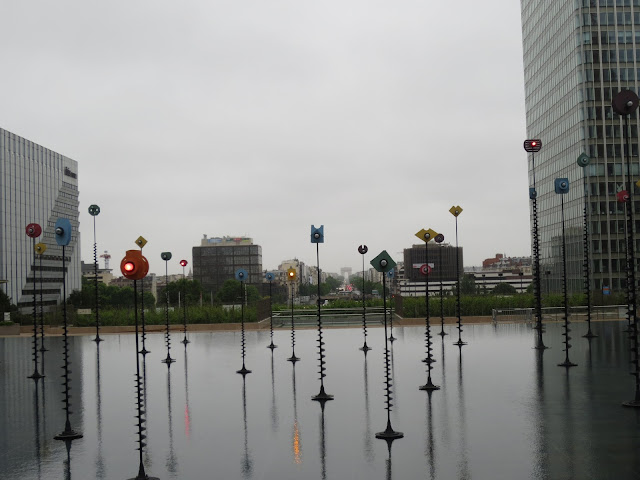Three days is not enough to get to know an entire province, but it does give you time to get to know three charming cities and see a bit of countryside.
And of course, the province holds a special connection thanks to our love for the American city with it's namesake, so we couldn't help asking each other once in a while if we were really "feeling the zeel" ©.
In hindsight, the answer is a resounding, "Yes."
We had a 'home base' in the city of Middelburg . . .
. . . where there were more dining and lodging options.
The B&B with the lanterns is where we had an extremely pleasant stay.
But most of our time was spent out on the streets of Zeeland. And some of our wanderings led us to wonder why they were so incredibly committed to cellars. We think we found a sort of answer when we learned about the agriculture (onions) of the area... but we have more research to do on this architectural trait of Zeeland (Middelburg in particular).
Zeuwse (Zeelandish) farmland.
You can't see any piles of onions in this one, but they were common in the many other fields of dark soil.
We started our tour in the coastal city of Vlissingen (called Flushings for in English... probably because people have trouble pronouncing languages that are not their own).
Rather than a sign saying "this way to the sea" Vlissingen employed stripes to signal its many visitors in direction of the sea and town.
It didn't take long for us to feel the sea air in our hair and see the town in the distance.
But eyes can deceive you... it took a good while for our feet to reach town.
However we eventually did reach town . . .
. . . and since all the stores were closed (Monday = closing day), we wandered around the lanes of Vlissingen for a while.
It didn't take us long to find the sandy stretch of land that these days keeps people streaming into the small city: the beach. We were not sad to have visited during the 'off season' -- we can only imagine what a crowded sight the place must be in the summer.
One fun fact aspect of Vlissingen that was not possible to capture on camera (for reasons of social propriety) were the binoculars/spy glasses in many a window. In fact we even caught a couple using their binoculars as we walked past.
The many ships that pass by this city do not go unnoticed. In fact, it seems they provide a pastime for many a resident.
We enjoyed some fresh breezes from the water and a cloudy sunset while walking along the beach.
We always seem to go to the shoreline when 'you're not supposed to' but we find it to be the most peaceful time, so I don't think we'll quit the habit.
We ended up back in town for a delicious meal of Zeeland mossels, but first we stopped to admire the biggest naval hero of Zeeland (and possibly The Netherlands?). Michael de Ruijter who was a naval general who led the Dutch to victory against the Brtitish. It was hundreds of years ago, but he's still plenty loved.
The next day we found some cushy rental bikes ...
... and left the city of Middelburg once again in search of...
. . . the Medieval coastal town of Veere (fey- ruh).
There it is in the distance.
This small pristine town is really more of a tourists delight than much of a community any more (although there is an elementary school in town)...
... the buildings remaining from it's prosperous 1400's days is what keeps it on the map.
Scaffolding... constantly ruining photos and saving buildings all over Europe.
De Grote Kerk (The Big Church)
And it is indeed big.
We were trying to figure out if the massiveness of the building is more of an illusion created by the tiny homes surrounding it, or if the sheer bulk of the width of the tower and thickness of the sides is what makes it seem so monstrous. Whatever the case... it sure feels like one Big church when you're walking up to it. And then once you've climbed to the top of the tower you can see right back to the city (Middelburg) where we came from.
The inside of the church has seen better... and more religious days.
Ever since the time in the 1700's when it was turned into a 4 floor hospital it's sort of fallen in and our of repair. Today it's really more of a shell of it's former self.
As well as a great delight to children, because who wouldn't want to swing on a wooly seated swing from the rafters of a cathedral?
And of course what would a nice town in Zeeland be without some beautiful waterways?
It certainly wouldn't be a typical Zeeland town.






























































